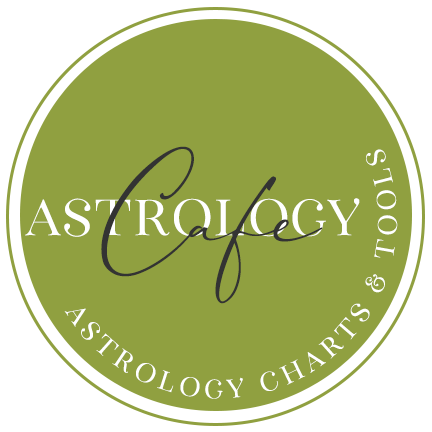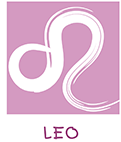More Information on the Vedic Compatibility Report
Back to the Vedic Compatibility Report
Inside a report:
Respect / Strii Diirgha
The technique used to determine whether a couple will be inclined to respect each other is known as Strii Diirgha. The Nakshatra (Moon’s asterism) of the man should be at least 14 away from the woman’s. If it is not at least 14 away, problems will be likely. If it is not at least 14 away, but only nine to thirteen away, then the problems will be somewhat reduced. If the total Wavelength points are 20 or higher, then the problems become reduced to an acceptable level.
When there are at least 14 Nakshatras from the woman’s from the man’s the shortest flow of energy is from the man to the woman, allowing him to naturally play the masculine role and her to play the feminine. When there is less than 14 the shortest flow of energy is from her to him. This creates a flow of energy that forces her to play the masculine role and him the feminine. The result is a short circuit in their relationship. When there is less than 9 Nakshatras separating them this manifests at its worst.
Classical texts consider Strii Diirgha to indicate general welfare, well being of the bride, and long marital bliss.
Wavelength / Ashta Kutas
The technique that is used to determine your Wavelength points is known as Ashta Kuta, “heap of eight.” Eight measurements are taken between your Moons. These eight measurements are known as Nadi Kuta, Bha Kuta, Gana Kuta, Graha Maitram Kuta, Yoni Kuta, Tara Kuta, Vasya Kuta and Varna Kuta, which are each respectively worth 8, 7, 6, 5, 4, 3, 2 and 1 point.
Following Vedha, Rajju and Strii-Diirgha, the next most important factor to consider in compatibility is the Ashta Kuta points. The Moon represents nourishment and what you need to feel nourished, not just in the sense of food, but anything that you take in, through any of your senses, which all serve to stimulate your life force one way or another, and which have a subtle influence on your mental and physical well-being. The total points between your Moons indicate the similarity of your needs and your ability to both feel fulfilled and happy with continued exposure to each other. The higher the points, the more you will feel like the same thing at the same time. You will be on a more similar “wavelength” and have more similar “taste-buds.” This makes it easy and natural for both of you to be fulfilled. If the points are low, you will have different needs and require different things in order to feel comfortable and “right.”
Twenty or more points are preferred, though 16 – 19 points are okay and not damaging to the relationship. Less than sixteen points begin to cause problems that may not seem too problematic at first, but which will take their toll over the long haul.
Excess / Nadi Kuta
The technique that is used to determine whether there is an excess of Kapha, Pitta or Vata is known as Nadi Kuta. Nadi being the energetic passage, or vein, through which the energies of Kapha, Pitta and Vata flow.
Each Nakshatra (starry constellation) is Kapha, Pitta or Vata. The important Nakshatra is the one that your Moon is in. The Nakshatras that your Moons are in are highlighted below:
Kapha: Krittika, Rohini, Aslesha, Magha, Svati, Vishakha, Uttara Ashada, Sravana and Revati.
Pitta: Bharani, Mrigashira, Pushyami, Purva Phalguni, Chitra,
Anuradha, Purva Ashada, Dhanishta and Uttara Bhadra Pada
Vata: Asvinni, Ardra, Punurvasu, Uttara Phalguni, Hasta, Jyeshtha, Mula, Shatabishak and Purva Bhadra Pada.
If your Moons fall in different types of Nakshatras, then all is well and you earn eight points. If both of your Moons are in Kapha Nakshatras, there will be an excess of Kapha in the relationship. If both of your Moons are in Pitta Nakshatras, there will be an excess of Pitta in the relationship. If both of your Moons are in Vata Nakshatras, there will be an excess of Vata in the relationship. The woman will tend to suffer more if the excess is Kapha or Vata while the man will tend to suffer more if the excess is Pitta.
Constructivism / Bha Kuta
The technique that is used to determine whether a couple can create well together and be constructive together is known as Bha Kuta. Bha is a name for the signs of the zodiac and this Kuta is based on the sign positions of the Moons of the couple. The Moon signs of the couple should be the same, in the 7th from each other, in the 3rd and 11th from each other, or the 4th and 10th from each other, in which case seven points are earned.
The Moon signs of the couple should not be in the 6th and 8th from each other, the 5th and 9th, or the 2nd and 12th from each other. For example, if one of the couple has his Moon in Aries, while the other persons Moon is in Virgo, their Moons will be in the 6th and 8th from each other, and this would not be compatible. For the person with their Moon in Aries, a person with their Moon in Taurus, Leo, Scorpio, Sagittarius or Pisces would also not have favorable Bha Kuta.
Classical texts give specific effects to the different unfavorable positions:
If the Moons are in the 6th and 8th from each other it is said to be the giver of loss, ruin, quarreling and separation.
In the 5th and 9th, it is said to cause loss of progeny.
In the 2nd and 12th, it is said to cause poverty.
If the Moons are in the favorable positions, it is said that there will be prosperity and happiness. All of these results should be taken symbolically and not literally, thus loss of progeny does not necessarily mean loss of children, but the disruption of some of the creative ventures of the couple.
The negative effects of unfavorable Bha Kuta will only be realized if the total points for all eight Kutas (the Wavelength score) are fifteen or less. The positive effects of favorable Bha Kuta will only be realized in full if the total points are twenty or more.
Temperament / Gana Kuta
The technique used to determine the affinity of two people’s temperaments is known as Gana Kuta. Gana means race and determines a person’s temperament based on the symbolism of three mythological races: Deva (divine), Manushya (human) and Rakshasa (demon) race.
Deva (divine) Nakshatras: Asvinni, Mrigashira, Punurvasu, Pushyami, Hasta, Svati, Anuradha, Sravana and Revati. Devas are faithful, open, loyal and devoted.
Manushya (human) Nakshatras: Bharani, Rohini, Ardra, Purvaphalguni, Uttaraphalguni, Purvaashada, Uttaraashada, Purvabhadrapada and Uttarabhadrapada. Manushyas are practical and progressive.
Rakshasa (demon) Nakshatras: Krittika, Aslesha, Magha, Chitra, Vishakha, Jyeshtha, Mula, Dhanishta and Shatabisha. Rakshasas are independent, eccentric and capable of breaking attachments and conventions.
The Nakshatra that the Moons of the couple are compared:
If both the Ganas (races) are the same then 6 points are given.
Woman Deva and the man Manushya = 3 points.
Woman Deva and the man Rakshasa = 1 point.
Woman Manushya and the man Deva = 5 points.
Woman Manushya and the man Rakshasa = 3 points.
If the woman is Rakshasa Gana and the man Deva or Manushya Gana then no points, and according to classical texts, “quarreling will prevail and marriage will be unhappy.” Only a man with his Moon in a Rakshasa Nakshatra is considered compatible; pairing up with a man with a Deva or Manushya Nakshatra is considered to bring troubles. Only a man with a Rakshasa Nakshatra is able to fully appreciate a woman with her Moon in a Rakshasa Nakshatra.
According to the classical texts, Gana Kuta keeps the couple ever young, happy and increasing in love for one another.
Friendship / Graha Maitram Kuta
The technique used to determine the affinity for friendship is known as Graha Maitram Kuta. Graha Maitram means planetary friendship. Planets are friendly, neutral or inimical towards each other:
The Sun has the Moon, Mars and Jupiter as friends, Mercury as a neutral and Venus and Saturn as enemies.
The Moon has the Sun and Mercury as friends, Mars, Jupiter, Venus, and Saturn as neutrals.
Mars has the Sun, Moon and Jupiter as friends, Venus and Saturn as neutrals and Mercury as an enemy.
Mercury has the Sun and Venus as friends, Mars, Jupiter and Saturn as neutrals and the Moon as an enemy.
Jupiter has the Sun, Moon and Mars as friends, Saturn as neutral and Venus and Mercury as enemies.
Venus has Mercury and Saturn as friends, Jupiter and Mars as neutrals and the Sun and Moon as enemies.
Saturn has Venus and Mercury as friends, Jupiter as a neutral and the Sun, Moon and Mars as enemies.
The planets that rule the Moon signs of the couple are considered in respect to their friendship, neutrality or enmity with each other. If they are:
Mutually friends or the same planet: 5 points.
One friendly and the other neutral: 4 points.
Both neutral: 3 points.
One inimical and the other friendly: 1 point.
One inimical and the other neutral: ½ point.
Both inimical: 0 points.
If the signs of the Moons are 7th from each other, Graha Maitram is automatically considered good regardless of the relationship of the lords and the 5 full points are earned.
Instinctive Compatibility / Yoni Kuta
The technique used to determine the instinctive compatibility is known as Yoni Kuta. Yoni means “source” and refers to the sexual organ from which we are created. The Nakshatra of the Moon is related to an animal, which symbolizes the primal/instinctive nature of a person:
Asvinni – male horse, Bharani – male elephant, Krittika – female sheep, Rohini – male snake, Mrigashira – female snake, Ardra – female dog, Punurvasu – female cat, Pushyami – male sheep, Aslesha – male cat, Magha – male rat, Purvaphalguni – female rat, Uttaraphalguni – male cow, Hasta – female buffalo, Chitra – female tiger, Svati – male buffalo, Vishakha – male tiger, Anuradha – female hare, Jyeshtha – male hare, Mula – male dog, Purvaashada – male monkey, Uttaraashada – male mongoose, Sravana – female monkey, Dhanishta – female lion, Shatabishak – female horse, Purvabhadrapada – male lion, Uttarabhadrapada – female cow, Revati – female elephant.
Yonis are either the same, friendly, neutral, unfriendly, or inimical to each:
Buffalo is friendly with cow, elephant and sheep; neutral with cat, dog, hare, monkey, mongoose, rat and tiger; unfriendly with lion and snake; inimical with horse.
Cat is friendly with hare, monkey and mongoose; neutral with cow, dog, elephant, horse and sheep; unfriendly with horse, snake and tiger; inimical with rat.
Cow is friendly with hare and sheep; neutral with dog, elephant, monkey, mongoose and rat; unfriendly with horse, lion and snake inimical with tiger.
Dog is neutral with elephant, horse, monkey and snake; unfriendly with lion, mongoose, rate, sheep and tiger; inimical with hare.
Elephant is friendly with monkey, sheep and snake; neutral with hare, horse, mongoose and rat; unfriendly with tiger; inimical with lion.
Hare is neutral with monkey, mongoose, rate, sheep and snake; unfriendly with horse, lion and tiger.
Horse is friendly with monkey and snake; neutral with rat and sheep; unfriendly with lion and tiger.
Lion is neutral with monkey, mongoose and snake; unfriendly with rat, sheep and tiger.
Monkey is friendly with mongoose; neutral with rat and snake; unfriendly with tiger; inimical with sheep.
Mongoose is friendly with sheep; neutral with tiger; unfriendly with rat; inimical with snake.
Rat is neutral with tiger; unfriendly with sheep and snake.
Sheep is neutral with snake; unfriendly with tiger.
Snake is neutral with tiger.
The couple having the same Yoni is best and gives 4 points.
Friendly Yonis gives 3 points.
Neutral Yonis gives 2 points.
Unfriendly Yonis gives 1 point.
Inimical Yonis gives 0 points.
The Yonis symbolize the primal, instinctive nature of the individual. During intense experiences, including sex, people turn to their instinctive nature as symbolized by the Yonis. The better the Yonis between the couple the better they can act together and bond through intense situations and crisis.
Following are some keywords describing the characteristics that the animals symbolize:
Buffalo – strength, patience, overrunning.
Cat – cleanliness, finicky, detached, indifferent.
Cow- utility, overrunning.
Dog- loyalty, friendship, slinking, holing up.
Elephant – understanding, immobility.
Hare – fear, comfort.
Horse – power, panic.
Lion – pride, leadership, respect.
Monkey – playfulness, lack of seriousness.
Mongoose – viciousness, speed.
Rat – trickiness or treachery.
Sheep – gentleness, retreat, bareness.
Snake – transmutation, hibernation, sneakiness.
Tiger – aggression, ruthlessness.
Comfort / Tara Kuta
The technique used to determine whether a man’s presence will be felt as more comfortable or threatening to the woman is known as Tara Kuta. Tara means “star” and refers to a Nakshatra. The technique is called this because it simply measures the relationship of the Nakshatra of the man’s Moon to the woman’s.
The Nakshatra of the man’s Moon is counted from that of the woman’s and divided by nine. The remainder should be 0, 1, 2, 4, 6 or 8, in which case three points are earned.
The Tara Kuta is also known as Dina “Day” Kuta and is said to grant luck and long life. When Tara Kuta is met the man’s Nakshatra falls in an auspicious Nakshatra in respect to the woman’s, thereby ensuring that the woman feels comfortable and good with receiving any good that the male has to offer.
Innate Giving / Vasya Kuta
The technique used to determine if a couple will innately give to each other is known as Vaysa Kuta. Vasya means “dutiful.”
The signs of the Zodiac are either Quadrupeds, Human, Water, Wild, or Insect.
Aries, Taurus, the second 15 degrees of Sagittarius and the first 15 degrees of Capricorn are Quadruped signs
Gemini, Virgo, Libra, the first 15 degrees of Sagittarius and Aquarius are Human signs.
Cancer, the second 15 degrees of Capricorn and Pisces are Water signs.
Leo is the one wild sign.
Scorpio is the one Insect sign.
Quadruped, Human, and Water signs (all signs, except Scorpio) are Vasya to the wild sign, Leo.
Quadruped, Water, and Insect signs (all signs, except Leo) are Vasya to the Human signs (Gemini, Virgo, 1st half of Sagittarius, and Aquarius).
Water signs (Cancer, 2nd half of Capricorn, Aquarius and Pisces) are the food of the Human signs (Gemini, Virgo, 1st half of Sagittarius, and Aquarius).
Quadruped signs (Aries, Taurus, 2nd half Sagittarius, and 1st half Capricorn) are the food of the Wild sign (Leo).
The Vasya sign happily benefits the signs to which it is Vasya. The Vasya signs find meaning and happiness in being of benefit to the signs it is Vasya. The signs that are food to a sign, do benefit the signs which they are food to, but don’t do so as happily.
If the couple’s Moon signs fall in the same group, Vasya is good and 2 points are gained.
If one of the couple’s Moon signs is Vasya to the other 1 point is gained.
If one of the couple’s Moon signs is Vasya to the other, but is itself the food of the other, ½ point are gained.
If neither of the couple’s Moon signs are Vasya to the other, no points are gained.
Mutation / Varna Kuta
The technique used to determine whether a couple will gravitate towards positive improvement or not is known as Varna Kuta. Varna means “caste” as per the four-caste system. Each sign of the zodiac has a certain caste, which are listed in order of highest to lowest:
Brahmins (Priests): Cancer, Scorpio, and Pisces.
Kshatriyas (Warriors): Aries, Leo and Sagittarius.
Vaisyas (Merchants): Libra, Aquarius and Gemini.
Sudras (Laborers): Capricorn, Taurus and Virgo.
One point is gained if the castes of the couple’s Moon signs are the same, or if the man is of a higher caste. The caste of a person’s Moon does not mean that the person is actually of that caste, it is just a symbol used to make the comparison between the two people’s Moons.
It is not considered best for a woman of a higher caste to marry a man of a lower caste. Since feminine energy is more adaptable and mutable than masculine energy which is more fixed, if the woman’s Moon sign is of a higher caste than the man’s, then the tendency will be for the woman to pick up more of the man’s lower qualities, rather than for the man to pick up more of her higher qualities.
Innate Sense of Purpose / Mahendra
The technique used to determine whether a couple will have an innate sense of purpose is known as Mahendra. Mahendra means “great spirit,” and thus reveals the unity of soul purpose.
The Nakshatra of the man’s Moon should be the 4th, 7th, 10th, 13th, 16th, 19th, 22nd, or 25th from the woman’s.
According to classical texts, Mahendra indicates longevity and well being; and grants children, grandchildren, and prosperity. Mahendra indicates a special affinity and friendship that provides for a sense of meaning and purpose throughout life. If Mahendra is present, and if the rest of the compatibility is solid, even if the couple gets together for the worst of reasons, or immaturely, they will have a great chance of feeling like they should still be together years down the road. If Mahendra is not present the couple should make sure they know the reasons for getting together and that they will be lasting or, years later, they may likely find that they don’t have that much reason to be together.
Obstructions / Vedha Dosha
The technique that is used to determine whether there will be excessive obstructions that prevent your lives from completely coming together is called Vedha, which means obstruction. Vedha is one of the two Maha Doshas, “Great Blemishes,” that can affect a relationship. Vedha is determined by the Nakshatras (starry constellations) that your Moons are in. Each Nakshatra has one–or in a few cases two–Nakshatras that are obstructive with it.
Below are the Nakshatras that are Vedha to each other and which indicate obstacles to being together. The Nakshatras that your Moons are falling in are highlighted.
Asvinni & Jyeshtha are obstructive.
Punurvasu & Uttarashada are obstructive.
Uttaraphalguni & Purvabhadrapada are obstructive.
Bharani & Anuradha are obstructive.
Pushyami & Purvashada are obstructive.
Hasta & Shatabishak are obstructive.
Krittika & Vishakha are obstructive.
Aslesha & Moola are obstructive.
Rohini & Svati are obstructive.
Magha & Revati are obstructive.
Ardra & Sravana are obstructive.
Purvaphalguni & Uttarabhadrapada are obstructive.
Mrigashira, Chitra & Dhanishta are obstructive.
Misfortune / Rajju Dosha
The technique that is used to determine whether the couple will attract misfortune or not and whether unexpected troubles may arise between them is known as Rajju, which means rope, symbolizing the rope that ties them to misfortune. Rajju is the second of the two Maha Doshas, “Great Blemishes,” that can affect a relationship.
Nakshatras are considered to fall into the following different body parts:
Feet: Asvini, Aslesha, Magha, Jyeshtha, Moola, Revati.
Hip: Bharani, Pushyami, Purva Phalguni, Anuradha, Purva Ashada, Uttara Bhadra Pada.
Neck: Rohini, Ardra, Hasta, Svati, Sravana, Shatabishak.
Navel: Krittika, Punurvasu, Uttara Phalguni, Vishaka, Uttara Ashada, Purva Bhadra Pada.
Head: Mrigashira, Chitra, Dhanishta
The Nakshatras should fall in different divisions in order to provide happiness and, according to the ancient texts, “protection from widowhood.” According to the ancient texts, the following are the results of the Moon’s falling in Nakshatras that are of the same body part, though these results are meant to be taken symbolically and not literally:
If they both fall in the feet there will always be wandering.
If they both fall in the hip there will be poverty.
If they both fall in the navel there will be loss of children.
If they both fall in the neck the wife will die.
If they both fall in the head the husband will die.
There is an exception to this blemish: If Stri Diirgha (respect), full Graha Maitra (friendship), Tara (comfort) and Mahendra (innate sense of purpose) are present then Rajju need not be considered. If only one, two or three of these are present then Rajju will only be partially cancelled and still be a source of trouble.
Magnetic Attraction / Vasya
The Moon signs of the couple determine this extra magnetic attraction. Certain Moon signs are particularly drawn towards others:
For Aries Moon – Leo and Scorpio Moon are magnetically attracted.
For Taurus Moon – Cancer and Libra Moon are magnetically attracted.
For Gemini Moon – Virgo Moon is magnetically attracted.
For Cancer Moon – Scorpio and Sagittarius Moon are magnetically attracted.
For Leo Moon – Libra Moon is magnetically attracted.
For Virgo Moon – Pisces and Gemini Moon are magnetically attracted.
For Libra Moon – Capricorn and Virgo Moon are magnetically attracted.
For Scorpio Moon – Cancer Moon is magnetically attracted.
For Sagittarius Moon – Pisces Moon is magnetically attracted.
For Capricorn Moon – Aries and Aquarius Moon are magnetically attracted.
For Aquarius Moon – Aries Moon is magnetically attracted.
For Pisces Moon – Capricorn Moon is magnetically attracted.
This magnetic attraction or draw can cause the person who is drawn to the other to do almost anything for the relationship.
It is of greater benefit to the relationship for the man to be drawn towards the woman than it is for the woman to be drawn towards the man since it helps the man bond more strongly to the woman. Women generally bond more strongly than men, especially sexually, so the extra benefits of a bonding attraction are not as strongly felt when it is the woman who is drawn towards the man.
This can indicate a powerful magnetic attraction, which, if the rest of the compatibility is solid, can really add to the relationship, but if the rest of the compatibility is problematic, this can make it very difficult for the person being drawn towards the other to let go if things do not work out.
Assertive Pressure / Kuja Dosha
The technique used to determine the assertive pressure between the couple is known as Kuja Dosha, “Mars Blemish.” Kuja Dosha is greatly feared in India where those ignorant of astrology believe that Mars will cause the death of the spouse and many good women have remained unmarried due to this “curse” in their horoscope. Used properly, however, Kuja Dosha is an important consideration with respect to the couple living in harmony with each other.
Kuja Dosha is simply determined by checking to see if Mars in the 2nd, 4th, 7th, 8th or 12th house from the Ascendant, Moon, and Venus. This check should be made in the natal chart, the Trimsamsa chart (which is an important harmonic chart) and the Navamsa chart (which is the harmonic chart bearing on relationships). Checking Mars from these three points in three charts creates the possibility of Mars being in a Kuja Dosha position nine times. It is important that Mars is in these positions the same amount of times in each persons chart. If Mars is in these positions one more time in one of the charts it is also acceptable. If Mars is in these positions two or more times in one of the charts, the problems begin to emerge. The more the difference between the charts, the more severe the problems will become.
This compatibility report is written by Ernst Wilhelm and produced by Kala Occult Publishers. If you are interested in learning more about Vedic Astrology, please visit www.vedic-astrology.net.
![]() See a Sample of this report, entitled Vedic Compatibility Report.
See a Sample of this report, entitled Vedic Compatibility Report.
![]() Back to the main Vedic Compatibility Report page.
Back to the main Vedic Compatibility Report page.
![]() Back to the Compatibility reports page.
Back to the Compatibility reports page.
Note that this is a romantic compatibility report. Note also that the system used here speaks of the man and the woman. Many of the interpretations are gender-sensitivethat is the nature of the Vedic compatibility system. It is not meant to offend anyone.
Pay with your credit card or debit card: We accept payments through PayPal. This safe and secure service allows our readers to pay instantly online using their credit cards, debit cards, or e-checks. The process is easy and safe, and you are not required to register with Paypal in order to complete this transaction.
#VC $4.00 US Vedic Compatibility Report computerized report sent through email.
Male’s Data: Name, Birth Day, Birth Time, Birth PlaceFemale’s Data: Name, Birth Day, Birth Time, Birth Place
Special: Two Compatibility Reports
Combine our Romantic Compatibility Report (Western Astrology) and our Vedic Compatibility Report for $12.00.
#RVC $12.00 US Romantic and Vedic Compatibility Two Reports Special computerized reports sent through email.
Male’s Data: Name, Birth Day, Birth Time, Birth Place Female’s Data: Name, Birth Day, Birth Time, Birth Place
Any questions before you buy? Send an email for more information or help to: reports@cafeastrology.com











